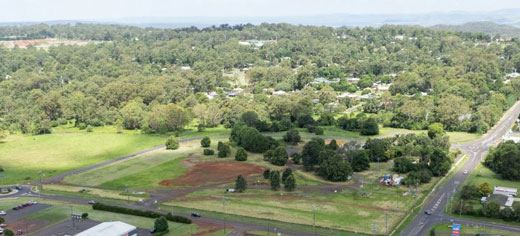NSW Department of Customer Service (DCS) Spatial Services and CSIRO’s Data61, the data and digital specialist arm of Australia’s national science agency, announced today that the NSW Spatial Digital Twin will be used to assist emergency services in developing effective emergency management strategies, ahead of the upcoming bushfire season.
Launched earlier this year, the NSW Digital Twin incorporates a four-dimensional visualisation platform (Digital Twin Visualisation Service, DTVS) developed in collaboration with Data61.
To help boost its capabilities, a new 3D spatial dataset will be added into the NSW Spatial Digital Twin, mapping the locations of telecommunications towers and assets across NSW to enable emergency services to better protect these vital locations before and during a disaster.
“The new dataset will inform emergency responders as to what telecommunications services are and are not accessible for operational use, what services are available to communities, and will help ensure residents have the greatest prospect of retaining communications and connectivity during a crisis,” said Bruce Thompson, Executive Director of NSW Spatial Services.
Built on the Visualisation Service utilises secure open-source data catalogue to securely bring together, organise and visualise data from public agencies and the private sector, enabling emergency services’ disaster planning, preparedness, response and recovery.
identified the loss of connectivity as a recurring issue throughout the last bushfire season, with the destruction of critical communications infrastructure across the state leaving at-risk communities and emergency responders on occasion cut-off from the outside world.
The enquiry found that the reliable sharing of critical infrastructure, telecommunications and spatial information will be a key component to preventing a similarly devastating summer.
“There is nothing more powerful than the spatial layers to paint the picture about what’s at risk, so having access to the Digital Twin allows us to invest in preventative and mitigation strategies,” says Shane Fitzsimmons, Head of Resilience NSW, and previously NSW Rural Fire Service Commissioner, in a . “In an unfolding emergency, like a bushfire, we can know in advance what’s likely to happen in that fire in the next few days, making sure we can shore up protection as much as we can.”
“Having a Digital Twin for communications infrastructure means we can factor into our risk planning and our annual treatments in the months and years before a fire impact,” explains Mr Fitzsimmons. “In the event that something is impacted, we can put in contingencies for servicing resupply and repair to get it back up and running as quickly as we can.”
Mats Henrikson, Web Geospatial Systems Group Leader at CSIRO’s Data61 said this application of the Digital Twin highlights its role as an ecosystem enabling data infrastructure, helping governments and industry make better decisions on environmental management, natural resource management, as well as emergency management, and informing infrastructure planning and delivery.
“The Digital Twin Visualisation Service leverages Data61’s deep strength in web-mapping and visualising data in 4D (3D + time, which is the ability to look forward and back in time) to build a real-world ‘digital twin’ that can help protect communities and assets in times of need,” Mr Henrikson concludes.








